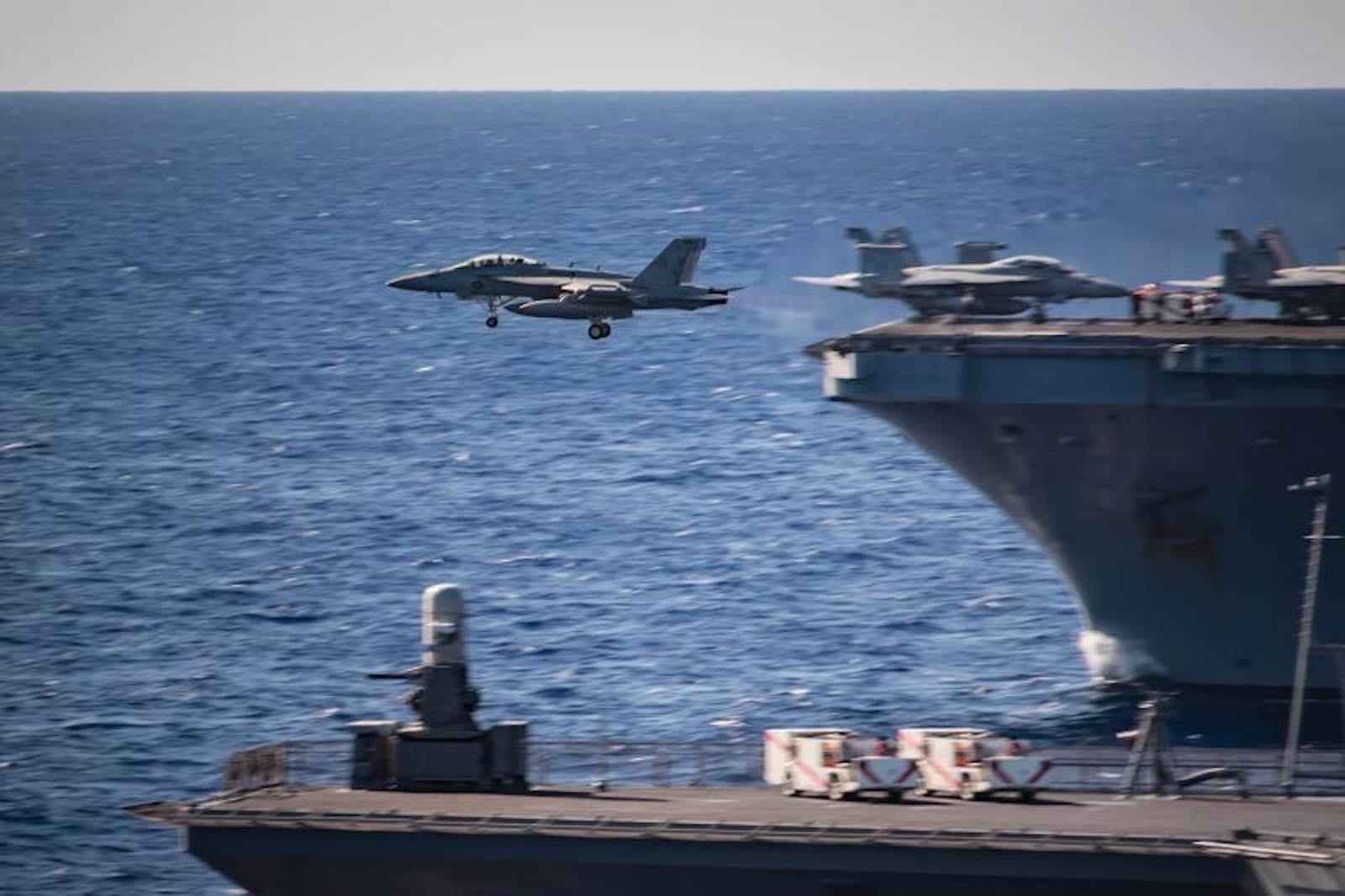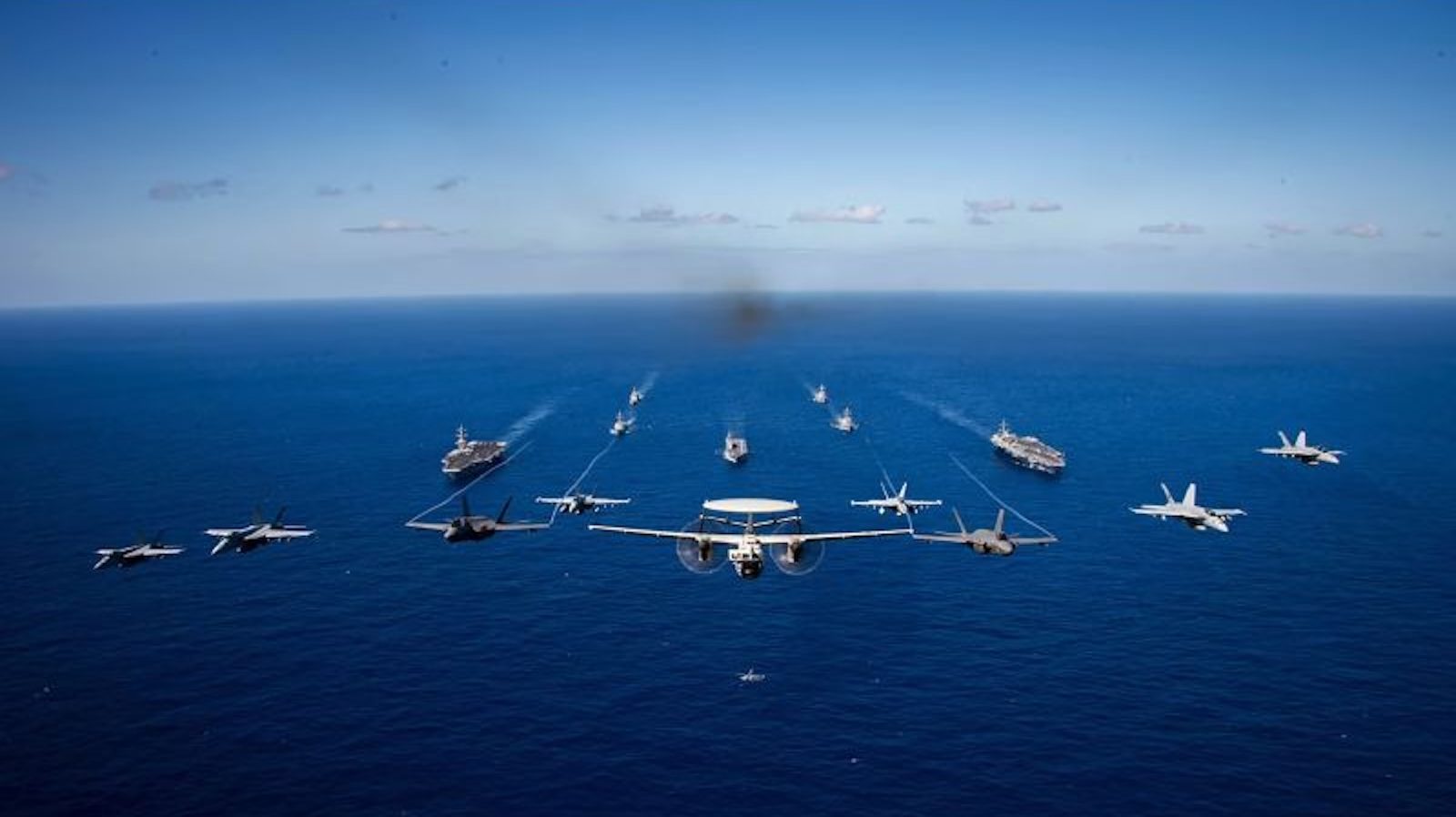SEOUL, South Korea (CNN) — A dozen US and Japanese warships, including two US aircraft carriers, were in a show of military force this week in the Philippine Sea east of Taiwan.
Analysts say the joint exercises show the U.S. Navy can respond to a wide range of contingencies in the Asian littoral, where tensions with China are high, even as it faces wars in the Middle East.
The US Navy aircraft carriers USS Carl Vinson and USS Theodore Roosevelt were joined by the Japan Maritime Self-Defense Force helicopter destroyer JS Ise, seven US guided-missile destroyers and two US cruisers.
“The United States and Japan are capable of rapidly assembling multiple large-scale fleets in support of mutual security interests in the Indo-Pacific region,” the Navy said in a statement.

An F/A-18E Super Hornet takes off from the aircraft carrier USS Carl Vinson on Jan. 31 during a training exercise in the Philippine Sea. (Credit: US Navy)
According to a US Navy statement, the dozen warships “conducted defensive exercises, maritime surveillance, cross-platform exercises and tactical maneuvers to advance a unique, high-level combat capability”.
The exercises began this Monday and will end this Thursday, according to a statement from the Japanese military.
Colin Koh, a researcher at the S. Rajaratnam School of International Studies in Singapore, said that while exercises in this area are ongoing, the timing of this exercise of power is critical.
“There were earlier fears that outbreaks in the Middle East would shift the strategic focus of the United States away from the Western Pacific,” Koh said.
“It was seen as a demonstration of America's commitment to its strategic focus in the region regardless of what happens in the Middle East,” he added, noting that the USS Ronald Reagan, the third US aircraft carrier in the Asia-Pacific, is now based in Japan.
Meanwhile, according to the USNI Fleet Tracker, only one U.S. aircraft carrier — the USS Dwight D Eisenhower — is in the Middle East, where Houthi rebels have faced a series of attacks on U.S. naval assets and merchant ships in the Red Sea. US and British attacks on the group's infrastructure in Yemen.
Hawaii-based analyst Carl Schuster, former director of the US Pacific Command's Joint Intelligence Center, said the joint exercises in the Philippine Sea show the US Navy can quickly bring forces to areas where China's naval units operate. recent months.
“As an exercise, it demonstrates the maneuverability of an aircraft carrier. Geopolitically, it also demonstrates the aircraft's ability to withstand various contingencies over a wide area,” Shuster said.
Possible sources of ocean tension
That vast area reaches as far south as the islands and reefs in the South China Sea, where Chinese and Philippine ships have been in recent skirmishes. It also extends to the democratically-ruled island of Taiwan in the west, which has reported increases in Chinese naval and air activity in surrounding waters since its January election.
It stretches northwest to the East China Sea and the Japanese-controlled Senkaku Islands, known by China as the Daoyus, which Beijing claims as its sovereign territory and which, according to Japan, it owns. .
All these areas are potential military flashpoints between China and the US and its allies.
But Taiwan has been in the spotlight since a January 13 election in which voters gave the island's ruling Democratic Progressive Party a historic third consecutive presidential victory, defying China's warning that its re-election bid would increase.
Shortly after the vote, Beijing responded: “Taiwan is part of China.”
China's ruling Communist Party considers Taiwan part of its territory, never controlled it, and Chinese President Xi Jinping has not ruled out using force to bring the island under Beijing's control.
Admiral John Aquilino, head of the US Indo-Pacific Command, said at a conference in Hawaii after the Taiwan election that he hoped Beijing would show its displeasure with the outcome of the vote.
“The coercive pressure campaign against Taiwan continues, and we've been watching it since the election,” Aquilino told the Pacific Forum.
“I don't know what they're going to do, but I expect some strength against Taiwan in the short term.”
The US admiral also highlighted the importance of exercises such as the joint exercises between the US and Japan taking place this week.
“The ability to move forces forward, to sustain the force, to train and operate with our allies and partners in their own territory provides an asymmetric advantage,” Aquilino said.


:quality(85)/cloudfront-us-east-1.images.arcpublishing.com/infobae/BH6NLAQGXJGADFWTENBUV7Z7RQ.jpg)
:quality(85)/cloudfront-us-east-1.images.arcpublishing.com/infobae/3GK63ATFOMFAYNUAQKUL4WUJFM.jpg)

:quality(85)/cloudfront-us-east-1.images.arcpublishing.com/infobae/SJ35ZLSJ5NB4BWVRJPSK74P7AQ.jpg)